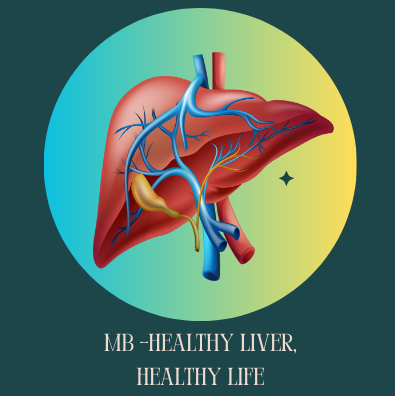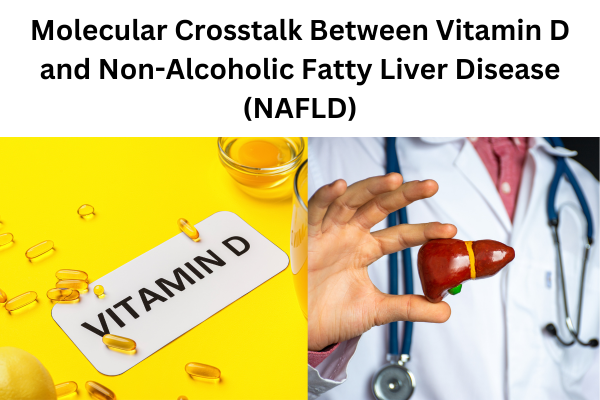Molecular Crosstalk Between Vitamin D and Non-Alcoholic Fatty Liver Disease (NAFLD)
Non-alcoholic fatty liver disease (NAFLD) has become a significant public health concern, affecting millions worldwide. It ranges from simple steatosis (fat accumulation in the liver) to non-alcoholic steatohepatitis (NASH), which can progress to cirrhosis and liver cancer. Understanding the molecular mechanisms underlying NAFLD is crucial for developing effective prevention and treatment strategies. Recent research has shed light on the intriguing relationship between vitamin D and NAFLD, revealing a complex interplay at the molecular level.
Understanding NAFLD
NAFLD is characterized by the accumulation of fat in liver cells and is not caused by alcohol consumption. Risk factors include obesity, insulin resistance, type 2 diabetes, and metabolic syndrome. The progression of NAFLD involves multiple molecular pathways related to lipid metabolism, inflammation, oxidative stress, and fibrosis.
The Role of Vitamin D
Vitamin D, a fat-soluble vitamin, is essential for calcium and phosphate homeostasis and bone health. It is synthesized in the skin upon exposure to sunlight and can also be obtained from dietary sources and supplements. Beyond its classic roles, vitamin D has been implicated in various metabolic processes and immune responses.
Vitamin D Deficiency and NAFLD
Studies have consistently shown a high prevalence of vitamin D deficiency in individuals with NAFLD. This deficiency is associated with the severity of liver steatosis, inflammation, and fibrosis. The molecular crosstalk between vitamin D and NAFLD involves several key mechanisms:
- Lipid Metabolism:
- Vitamin D influences lipid metabolism by regulating genes involved in lipogenesis (fat synthesis) and fatty acid oxidation. Vitamin D deficiency can disrupt these processes, leading to increased hepatic fat accumulation.
- The vitamin D receptor (VDR) is expressed in liver cells and modulates the expression of genes like peroxisome proliferator-activated receptor (PPAR), which plays a crucial role in lipid metabolism. Activation of VDR can suppress lipogenesis and promote fatty acid oxidation, reducing liver fat content.
- Inflammation:
- Chronic inflammation is a hallmark of NASH, the progressive form of NAFLD. Vitamin D exerts anti-inflammatory effects by inhibiting the production of pro-inflammatory cytokines (e.g., TNF-α, IL-6) and promoting the production of anti-inflammatory cytokines (e.g., IL-10).
- VDR activation can also modulate the immune response, reducing the infiltration of inflammatory cells into the liver and thereby mitigating liver inflammation.
- Oxidative Stress:
- Oxidative stress contributes to liver injury and fibrosis in NAFLD. Vitamin D has antioxidant properties that can help neutralize reactive oxygen species (ROS) and reduce oxidative stress.
- By regulating the expression of antioxidant enzymes (e.g., superoxide dismutase and glutathione peroxidase), vitamin D can protect liver cells from oxidative damage.
- Fibrosis:
- The progression of NAFLD to cirrhosis involves the activation of hepatic stellate cells (HSCs) and the deposition of extracellular matrix proteins, leading to fibrosis. Vitamin D can inhibit the activation of HSCs and the production of fibrogenic cytokines (e.g., TGF-β).
- VDR activation can also promote the degradation of the extracellular matrix by increasing the expression of matrix metalloproteinases (MMPs), thereby reducing liver fibrosis.
Therapeutic Implications
The molecular crosstalk between vitamin D and NAFLD suggests that vitamin D supplementation could be a potential therapeutic strategy for managing NAFLD. Clinical trials have shown mixed results, highlighting the need for more research to determine the optimal dosage, duration, and patient population for vitamin D supplementation.
- Prevention and Early Intervention:
- Adequate vitamin D levels may help prevent the onset of NAFLD by maintaining healthy lipid metabolism and preventing fat accumulation in the liver. For individuals at risk of NAFLD, such as those with obesity or type 2 diabetes, maintaining sufficient vitamin D levels through sun exposure, diet, or supplements could be beneficial.
- Adjunctive Treatment:
- For patients with established NAFLD, vitamin D supplementation may serve as an adjunctive treatment to standard interventions like lifestyle modifications (diet and exercise) and pharmacotherapy. By targeting multiple pathogenic pathways, vitamin D could enhance the overall effectiveness of NAFLD management.
- Personalized Medicine:
- Future research should focus on identifying biomarkers that predict the response to vitamin D supplementation in NAFLD patients. Personalized approaches, considering genetic, metabolic, and environmental factors, could optimize the therapeutic benefits of vitamin D in NAFLD.
Conclusion
The molecular crosstalk between vitamin D and non-alcoholic fatty liver disease underscores the potential of vitamin D as a modifiable factor in the prevention and management of NAFLD. By influencing lipid metabolism, inflammation, oxidative stress, and fibrosis, vitamin D plays a multifaceted role in liver health. As research progresses, a deeper understanding of this interplay will pave the way for novel therapeutic strategies, improving outcomes for millions affected by NAFLD. Maintaining optimal vitamin D levels could be a simple yet powerful approach to combating the growing epidemic of non-alcoholic fatty liver diseases.
 https://analytics.google.com/analytics/web/#/analysis/p405220706
Skip to content
https://analytics.google.com/analytics/web/#/analysis/p405220706
Skip to content 


8 thoughts on “Molecular Crosstalk Between Vitamin D and Non-Alcoholic Fatty Liver Disease (NAFLD):Unveiling Revolutionary Insights””